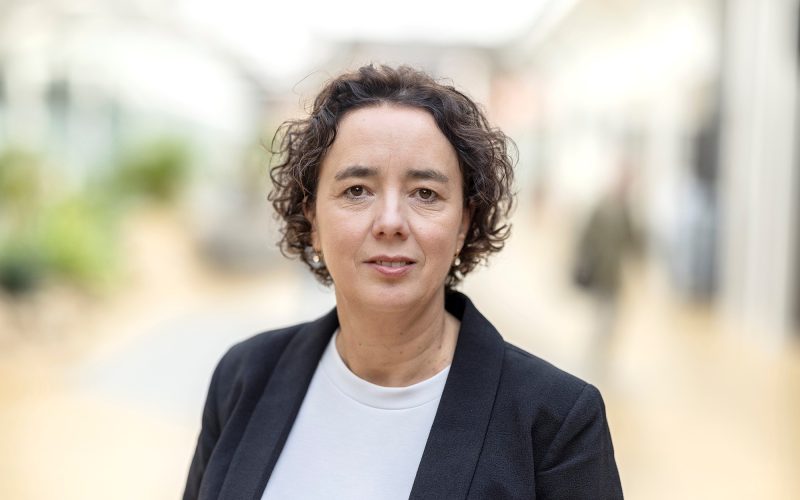How can genetic research contribute to better care for patients with aneurysms and subarachnoid hemorrhages (SAB)? The vision of Ynte Ruigrok, professor of “Genetics of Cerebrovascular Diseases,” is clear: through interdisciplinary collaboration and innovative technologies, we can make the leap from the laboratory to the clinic. On January 8, she delivered her inaugural lecture entitled ‘Learning to Translate’.
Genetics has enormous potential to transform health care. Yet the path from the laboratory to the clinic is often long and complicated. “Translating genetic discoveries into practice takes time, patience and collaboration,” explains Ynte Ruigrok. “But now, with all the knowledge and techniques we have accumulated, we are at a point where we can really accelerate that translation. The time has come to harvest.”
Techniques such as genome-wide association studies (GWAS) allow researchers to map millions of genetic variants. As a result, there is increasing insight into polygenic diseases, which involve multiple genes and environmental factors. “We have now identified 37 genetic regions involved in aneurysms and SAB. This provides tools for risk prediction and future treatments,” says Ynte.
SAB primarily affects women, a difference that Ynte and her research team are trying to explain. “We see that women are more likely to have an incomplete circle of Willis – a crucial vascular network in the brain – and that their vascular diameters are smaller. This may contribute to their increased risk,” she explains. Lifestyle and behavior also play a role. “For example, smoking appears to have a much stronger effect on risk in women than in men. We were able to confirm the increased risk of smoking in women with genetic data. The data provide evidence of a causal relationship. We can use this kind of insight to better design prevention, because the earlier we can address risk factors, the better.”
In addition to prevention, Ynte focuses on medications specifically tailored to genetic risk factors. “With genetic research, we can better understand which molecular processes contribute to disease. This makes it possible to repurpose existing drugs for new applications, such as lowering the risk of aneurysms,” she says. Developing drugs based on genetic insights is not only faster, but also more effective. “Drugs for which there is genetic evidence that they work are more than twice as likely to make it to market. That’s hopeful, because with better drugs we can offer patients more options besides major surgery.”
According to Ynte, the strength of the research field lies in collaboration. “We combine genetic, clinical and biological data to better understand the puzzle of diseases such as SAB. This kind of multidisciplinary approach is essential to make a real impact,” she says. She also sees opportunities to use new technologies. “Together with colleagues, we are developing an in vitro model that mimics the disease process of aneurysms. With this we can test drugs and discover how to inhibit the development of aneurysms. This brings us another step closer to better care.”
Ynte concluded her inaugural lecture on Learning to translate genetic discoveries in aneurysms and SAB with a powerful message. “The discoveries in the many studies are going to help us in risk prediction, prevention and treatment. It is a promising field, in which much progress has already been made, but in which there is still much more to learn. Interdisciplinary collaboration is crucial, as far as I am concerned, for this clinical translation to be as successful as possible.”
